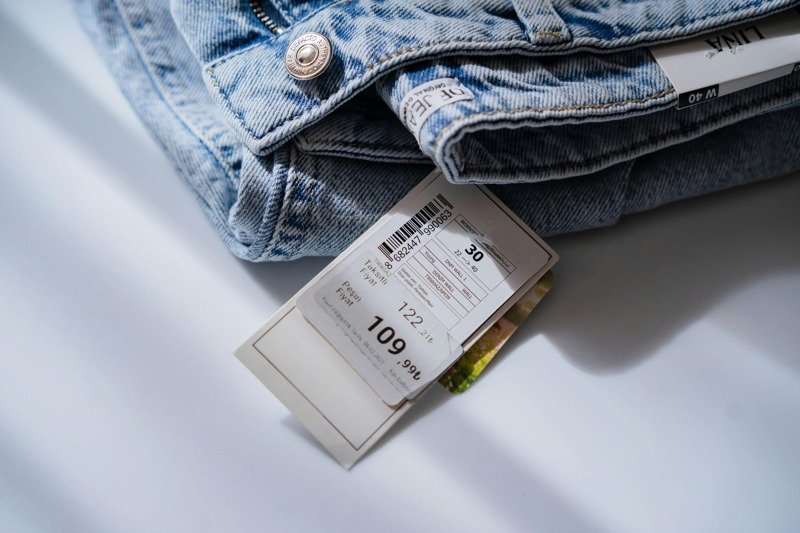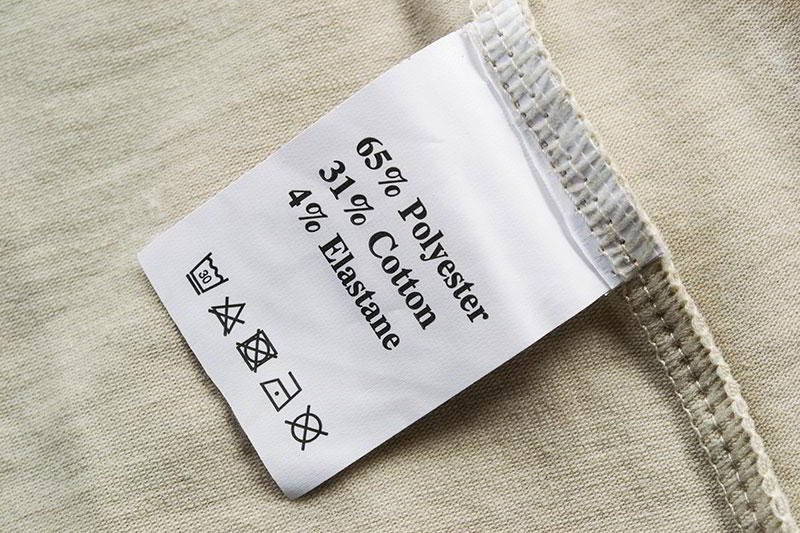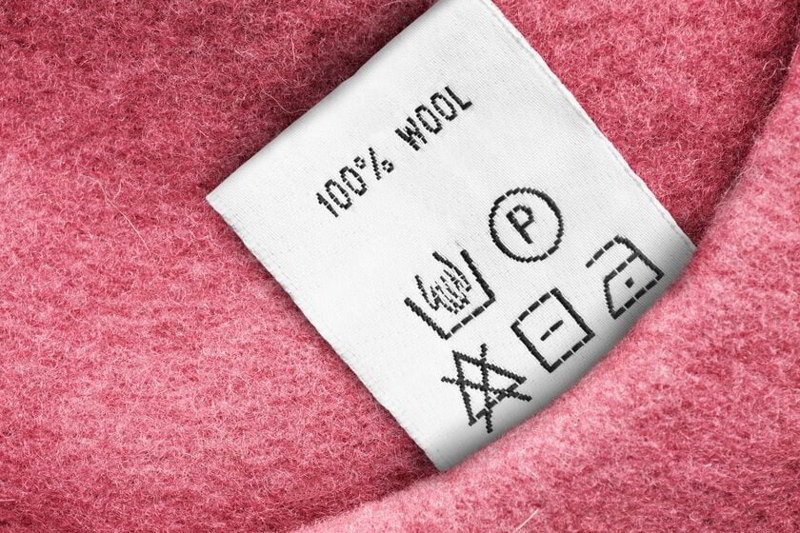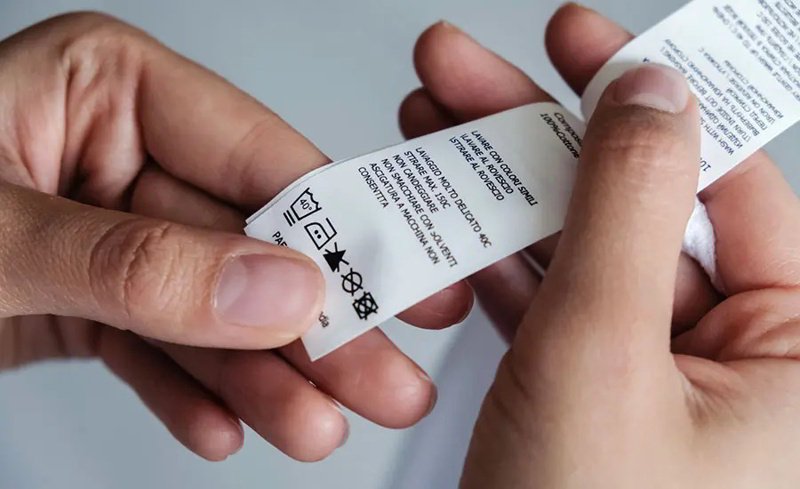US Clothing Label Requirements for Apparel Businesses
Navigating the landscape of US clothing label requirements can often feel complex for apparel businesses, especially those just starting or expanding into the United States law framework. Understanding and correctly implementing the FTC labeling rules for textile products is not merely a suggestion; it’s a fundamental aspect of legal compliance and consumer protection.
Failure to adhere to these apparel labeling laws can lead to significant challenges, including costly penalties, shipment delays, and damage to your brand’s reputation. This guide is designed to demystify these regulations, providing clear, actionable insights tailored for small business compliance.
By reading this article, you will gain a comprehensive understanding of the mandatory information required on labels, learn how to avoid common pitfalls, and discover resources to ensure your products meet all necessary standards, ultimately fostering consumer trust and supporting your business’s success in the US market.
1. Why Accurate Clothing Labels Matter in the US Market
Ensuring your apparel features accurate clothing labels is more than just good practice; it’s a cornerstone of operating successfully within the US Market.
1.1 Meeting Legal Obligations (FTC & Consumer Protection)
Compliance with clothing label regulations is not optional; these are legal obligations mandated by federal law. The primary statutes governing apparel labeling include the Textile Fiber Products Identification Act, the Wool Products Labeling Act, and the Care Labeling Rule.
The Federal Trade Commission (FTC) serves as the main enforcement agency, ensuring that businesses adhere to these rules. The fundamental purpose of these regulations is consumer protection—preventing deception and providing shoppers with reliable information to make informed purchasing decisions. Adherence signifies respect for the law and the consumer.
1.2 Building Consumer Trust and Brand Responsibility
Transparent and accurate labeling is a powerful tool for building consumer trust. When customers can easily find clear and truthful information about the materials and care required for a garment, their confidence in the brand grows.
This practice demonstrates brand responsibility and a commitment to quality and ethical operations. Providing informative labels shows respect for the consumer. Conversely, incorrect or misleading labels can quickly erode trust and severely damage your brand reputation, potentially leading to lost sales and negative publicity.
1.3 Avoiding Costly Penalties and Delays (FTC Action)
Non-compliance with labeling laws carries significant risks, including substantial financial penalties imposed by the FTC. Beyond fines, businesses may face mandatory product recalls, disruptions in their supply chain, and import holds enforced by U.S.
Customs and Border Protection (CBP), leading to costly delays. The FTC actively pursues action against violators, underscoring the importance of adhering to regulations to avoid penalties and maintain smooth business operations. These consequences can disproportionately affect smaller businesses, making proactive compliance crucial.

2. Who Needs to Comply with US Apparel Labeling Laws?
Understanding who bears the responsibility for compliance with US Apparel Labeling Laws is critical for anyone involved in bringing textile products to the American consumer.
2.1 Manufacturers, Importers, Wholesalers, and Retailers
The responsibility for ensuring compliant labels generally falls upon Manufacturers, Importers, Wholesalers, and Retailers. Essentially, any entity introducing the textile product into commerce within the United States must ensure the labeling is accurate and complete according to FTC regulations. This includes Small Business Compliance.
While manufacturers and importers are often the initial points of compliance, wholesalers distributing these goods and retailers selling them to the end consumer can also be held accountable. Retailers marketing private-label goods, or those who should reasonably know that a product’s labeling is non-compliant, share in this responsibility.
2.2 Products Covered (Apparel, Household Textiles)
The labeling rules apply broadly to most Apparel and common Household Textiles. This encompasses a wide range of Textile Products, including:
- Clothing items (shirts, pants, dresses, suits, etc.)
- Scarves
- Hosiery
- Handkerchiefs
- Bedding (sheets, pillowcases, blankets, bedspreads)
- Towels, washcloths, dishcloths
- Tablecloths, napkins, placemats
- Curtains and draperies
- Floor coverings containing textile fiber (rugs, carpets)
- Umbrellas and parasols
The general principle is that if the product is made primarily of textile fibers and used in a household or apparel context, it likely requires a clothing label adhering to FTC rules.
| Covered Textile Products | Typically Not Covered Textile Products |
|---|---|
| Clothing (most types) | Hats |
| Scarves | Shoes & Footwear |
| Hosiery | Belts & Suspenders |
| Ties | Handbags & Luggage |
| Bed Linens (sheets, blankets) | Sewing/Knitting Supplies (thread, yarn) |
| Towels | Disposable Non-woven Items |
| Curtains & Draperies | Diapers |
| Fiber-containing Floor Coverings | Furniture Upholstery (unless sold separately) |
| Handkerchiefs | Headwear |
| Umbrellas | Textile waste materials |
| Note: This list is not exhaustive. | Refer to official FTC guidelines for specifics. |
2.3 Key Labeling Exemptions to Note
While the rules are comprehensive, there are Labeling Exemptions for certain specific items. Some common Exemptions-based categories include:
- Items intended for one-time use (e.g., certain disposable non-woven garments).
- Products where the fiber content is negligible or does not impact performance or care.
- Items sold directly to institutional buyers (like hospitals or hotels) for their own use, not for resale.
- Certain trimmings and decorations (details covered later).
- Specific accessories like hats, shoes, and belts.
It’s crucial to exercise caution; exemptions are narrowly defined. Assuming an item is exempt without verifying against official FTC documentation can lead to non-compliance. When in doubt, providing a label is the safer approach. Always consult the official FTC list for definitive guidance on exemptions.
3. The Core Four: Mandatory Information for US Clothing Labels
Every clothing label destined for the US market must contain four key pieces of Mandatory Information. These Core Four elements provide consumers with essential details about the garment.
3.1 Fiber Content Disclosure: What It Is and How to List It
The Fiber Content Disclosure requirement aims to clearly inform consumers about the material composition of the garment they are purchasing.
Using Generic Fiber Names & Percentages by Weight (Material Composition)
Labels must list the constituent fibers using their FTC-approved Generic Fiber Names (e.g., ‘Cotton’, ‘Polyester’, ‘Rayon’). While brand names or trademarks (like ‘Lycra’ or ‘Supima’) can be mentioned alongside the generic name, they cannot replace it. The Percentage by Weight of each fiber must be stated, listed in Descending Order.
For instance, a label should read “60% Cotton / 40% Polyester,” not the other way around if cotton is the predominant fiber by weight. If a product consists entirely of one fiber, it can be labeled as ‘100% Cotton’ or ‘All Cotton’.
Importantly, non-fibrous materials like buttons, zippers, and sequins are generally excluded from this calculation. FTC regulations also permit the use of fiber names recognized under the ISO 2076 standard if certain conditions are met.
The 5% Rule and Its Exceptions (Wool, Functional Fibers, Other Fibers)
Generally, fibers constituting less than 5% of the total weight are grouped together and listed as ‘Other Fiber’ (if only one such fiber) or ‘Other Fibers’ (if multiple). However, there are crucial exceptions to this 5% Rule:
- Wool or Recycled Wool: Any amount of wool must always be disclosed by its specific name and percentage, even if it falls below the 5% threshold.
- Functional Fibers: If a fiber below 5% provides a specific function (e.g., ‘Spandex’ for stretch), its name and percentage can be listed. For example, “97% Cotton / 3% Spandex”.
- Aggregate ‘Other Fibers’: If multiple fibers are each under 5% but collectively make up 5% or more, they are listed as ‘Other Fibers’ followed by their combined percentage (e.g., “90% Polyester / 6% Rayon / 4% Other Fibers”).
Precision is key when applying these rules.
Handling Linings, Trims, and Ornamentation (Exclusive of Decoration)
The fiber content of Linings, Trims, and Ornamentation requires careful consideration.
- Linings: If linings provide warmth or structure (like in a winter coat), their fiber content must be disclosed separately. Structural linings (e.g., inside a tailored jacket) generally do not require separate disclosure unless requested by the buyer.
- Trims: Non-functional trim (like collars, cuffs, braiding, belts) constituting less than 15% of the garment’s surface area is typically excluded. If it exceeds 15%, its fiber content might need separate disclosure.
- Ornamentation: Decorative elements like embroidery or appliqué that make up less than 5% of the fiber weight can be excluded, often indicated by the phrase “Exclusive of Decoration” or “Exclusive of Ornamentation”. If the decoration exceeds 5% or provides a significant function, its content must be disclosed. Similar rules apply for elastic if it’s integral to the structure (e.g., waistbands), which can be noted as “Exclusive of Elastic”.
When distinct sections of a garment have different fiber compositions (e.g., body vs. lining vs. significant trim), sectional disclosure is often the clearest approach (e.g., “Body: 100% Cotton; Lining: 100% Polyester”).

3.2 Country of Origin Marking: Declaring Where Your Product is Made
This essential label component informs consumers about the manufacturing origin of the product, a requirement enforced by U.S. Customs and Border Protection (CBP Rules) based on FTC regulations and other US Customs Regulations.
Understanding “Made In” Designations (CBP rules, US customs regulations)
The “Country of Origin” is the nation where the product underwent its last substantial transformation. This determination follows CBP Rules and US Customs Regulations. Substantial transformation means the processing resulted in a new and different article with a distinct name, character, or use.
For imported goods, this is typically the country declared during the customs entry process. Simple assembly or finishing operations (like hemming or attaching buttons) may not be sufficient to change the country of origin established earlier in the manufacturing process. The label must state the full country name (e.g., “Made in Vietnam”, not “Made in VN”). Consistency between the label and import documentation is crucial.
Specific Placement Rules
Labels indicating the country of origin must be Conspicuous and accessible to the consumer at the point of sale. For garments that have a neck (like shirts, jackets, dresses), there’s a specific placement rule: the origin information must appear on a label affixed to the inside center of the neck, either midway between the shoulder seams or close to another label already located at the center neck (e.g., a brand or size Neck Garment Tag). For items without a neck (like scarves, socks, or pants), the label should be placed in another conspicuous and accessible location.
The Nuances of “Made in USA” Labeling Standard
Claiming a product is “Made in USA” requires meeting a particularly high standard set by the FTC. The “Made in USA” Labeling Standard dictates that “all or virtually all” of the product’s significant parts and processing must be of U.S. origin.
This means the final assembly or processing occurred in the U.S., and virtually all ingredients or components are U.S.-sourced. If a product incorporates significant imported materials, an unqualified “Made in USA” claim is generally not permissible.
Instead, qualified claims should be used, such as “Made in USA of imported fabric” or “Assembled in USA from foreign components.” Misusing the “Made in USA” label can lead to significant penalties. Businesses considering this claim should carefully consult the specific FTC guidance on this topic before proceeding.
3.3 Manufacturer Identification: Who Made or Handles the Product?
This label element identifies the business responsible for the garment entering the US market, providing traceability. This is often referred to as the manufacturer ID.
Using Your Business Name vs. RN Number (Manufacturer ID)
You have two primary options for fulfilling the Manufacturer Identification requirement:
- Business Name: Use the full, legal name under which your company operates.
- RN Number: Use your Registered Identification Number (RN Number). The RN is unique to your company and issued by the FTC. Using the RN Number can save space on the label and offers a degree of anonymity if preferred over displaying the full Business Name.
Both methods satisfy the manufacturer ID requirement.
How to Obtain and Use Your Registered Identification Number (RN Database)
Registered Identification Numbers (RN Numbers) are issued free of charge by the FTC. Businesses involved in manufacturing, importing, distributing, or selling textiles, wool, or fur products in the US can apply.
- How to Obtain: You can Obtain an RN Number by applying online directly through the FTC website. The application process is straightforward.
- RN Database: The FTC maintains a public RN Database where anyone can look up a company associated with a specific RN.
- Usage: Once obtained, the RN Number must be clearly displayed on the label as specified by the regulations.
3.4 Care Instructions: Guiding Consumers on Proper Garment Care
Providing clear garment care information is mandated by the Care Labeling Rule. The purpose is to give consumers reliable Care Instructions to prevent damage during cleaning and maintenance.
Requirements Under the Care Labeling Rule
The Care Labeling Rule requires labels to provide instructions for at least one safe cleaning method. This could be washing, dry cleaning, or both. If a standard cleaning process (like washing in hot water or using chlorine bleach) would harm the product, the label must include a warning (e.g., “Do Not Bleach,” “Machine Wash Cold,” “Dry Clean Only”).
The instructions must cover all relevant stages of the recommended cleaning process: washing, bleaching, drying, ironing, and/or dry cleaning. While the rule applies to most apparel, certain items may be exempt, such as those where the cleaning method is obvious (e.g., disposable items) or items completely unsuitable for any cleaning.
Using Standard Terms and Washing Instructions Symbols (ASTM)
You can convey care instructions using either Standard Terms (as defined in the FTC’s glossary) or the internationally recognized ASTM D5489 care Symbols. Using the correct ASTM Washing Instructions Symbols fulfills the labeling requirement without needing accompanying words, offering a universally understood visual guide.
Many businesses choose to use symbols for clarity across different languages, sometimes supplemented with key terms (e.g., “Machine Wash Cold” alongside the cold wash symbol). Ensure that if symbols are used, they are accurate according to the ASTM D5489 standard and represent a genuinely safe cleaning method for the garment.
Ensuring Label Durability and Legibility
A critical aspect of the Care Labeling Rule is that the care label must remain attached and Legible throughout the useful life of the garment. This requirement directly impacts the choice of label material (e.g., woven vs. printed satin, cotton, or nylon) and the printing or weaving technique used.
Flimsy labels that detach or ink that fades after a few washes do not meet the standard for Label Durability and Legibility. Careful consideration must be given to ensure the care information remains accessible to the consumer long after purchase.

4. Specific Material Labeling Considerations
Beyond the general rules, certain specific materials necessitate additional Material Labeling Considerations under US law.
4.1 Wool Products Labeling Act Essentials (Wool)
Products containing wool fall under the specific requirements of the Wool Products Labeling Act. Key distinctions include:
- Mandatory Percentage Disclosure: Unlike the general 5% rule for other fibers, any amount of wool or recycled wool must be disclosed with its percentage by weight.
- Identification of Specialty Wools: If the product contains specialty wools like cashmere, mohair, alpaca, etc., the specific type and its percentage must be stated (e.g., “80% Wool / 20% Cashmere”).
- Recycled Wool Distinction: If recycled wool is used, it must be clearly labeled as “Recycled Wool”.
Businesses dealing with high-end wool suits might also encounter “Super S” numbers indicating fiber fineness, which have specific definitional requirements if used.
4.2 Brief Notes on Fur Labeling, Leather, Down, and Emerging Materials
It’s important to be aware that specific regulations also govern other materials:
- Fur Labeling: Garments containing fur are subject to the Fur Products Labeling Act, which has distinct requirements regarding animal name, origin, and processing.
- Leather: Guides exist for the accurate labeling and advertising of leather and imitation leather goods.
- Down: Products filled with down or feathers have specific labeling rules regarding content and fill power.
- Bamboo/Rayon: Textiles marketed as “Bamboo” must typically be labeled as “Rayon” (or viscose), as the manufacturing process chemically alters the original bamboo fiber. Only products made directly with actual bamboo fiber can be labeled ‘bamboo’.
- Premium Cotton Fibers: When using specific types like Pima Cotton or Egyptian Cotton, the label must still include the generic name “Cotton” and its percentage. The premium descriptor can be used alongside it, provided it is accurate and truthful (e.g., “100% Pima Cotton”).
For detailed guidance on these materials, consult the specific rules and business guides available on the FTC website.
5. Label Placement and Format Best Practices
Beyond the content, the physical Label Placement and Format are also subject to regulations and Best Practices to ensure compliance and usability.
5.1 Ensuring Labels are Accessible and Secure
It is Mandatory that required labels are easily Accessible for consumers to find and read before they make a purchase. This means labels shouldn’t be hidden in obscure places. Furthermore, labels must be Securely attached to the garment so they remain affixed throughout its expected useful life.
Common secure attachment methods include a sewn-in label, proper heat sealing, or durable adhesives suitable for textiles. Typical placements include the center back neck area or an inside side seam.
5.2 Hang Tag vs. Sewn-in Garment Tags Compliance: What Goes Where?
Understanding the role of different tag types is crucial for Garment Tags Compliance. Generally, the mandatory information (Fiber Content, Country of Origin, manufacturer ID, Care Instructions) must be on a label that remains attached to the garment until after purchase – typically a Sewn-in or otherwise permanently affixed label.
Hang Tags serve primarily for branding, pricing, marketing messages, or providing additional Informative details. While you can repeat fiber content information on a hang tag, it doesn’t replace the need for it on the permanent label.
If fiber info is on a hang tag, specific FTC-approved phrases like “See sewn-in label for fiber content” or similar must be used to direct the consumer to the compliant label. Critically, placing mandatory information only on a removable Hang Tag does not meet FTC requirements, as this information must last with the garment.
6. Staying Compliant: Resources and Next Steps
Maintaining compliance with US clothing label regulations is an ongoing process that requires diligence and knowing where to find authoritative information. Utilizing the right Resources is key for Staying Compliant and planning your Next Steps.
6.1 Key FTC and CBP Resources (Official FTC Guidelines)
The most reliable sources for labeling requirements are the government agencies responsible for creating and enforcing them. Bookmark these essential FTC Resources and CBP Resources:
- Threading Your Way Through the Labeling Requirements Under the Textile and Wool Acts: This comprehensive guide from the FTC website is the primary reference for fiber content, manufacturer ID, and country of origin labeling.
- The FTC’s Care Labeling Rule: Provides detailed information on requirements for care instructions.
- Registered Identification Number (RN) System: The portal to apply for, update, or search for RN numbers.
- Enforcement Policy Statement on U.S. Origin Claims: Explains the strict standards for making “Made in USA” claims.
- U.S. Customs and Border Protection (CBP): For intricate details on determining the country of origin based on substantial transformation rules, the CBP website offers specific rulings and guidelines.
Relying on these Official FTC Guidelines and CBP information is the most effective way to ensure accuracy.

6.2 Importance of Record Keeping and Guaranties
Effective Compliance strategies involve more than just creating the label; they also include internal processes like Record Keeping and understanding supplier assurances.
- Record Keeping: Maintain thorough records documenting the fiber content and country of origin for each product line. These records are invaluable for demonstrating due diligence and verifying label accuracy if questions arise.
- Guaranties: Businesses can sometimes obtain Guaranties from their suppliers. These are formal assurances that the products received are correctly labeled according to US law. While receiving a guaranty can offer some protection, the FTC maintains that retailers and importers still hold responsibility, especially if they cannot produce the guaranty or should have reasonably suspected a violation. Consulting the FTC’s specific policy on guaranties is advisable if relying heavily on this mechanism.
7. Related Questions
Here are answers to some common FAQs regarding US clothing label requirements.
7.1 What are the main differences between US and EU clothing label rules?
While both the US and EU aim to inform consumers, there are notable differences in clothing label requirements. Fiber content disclosure is mandatory in both regions, but terminology and specific grouping rules can vary slightly under EU clothing label rules.
A key difference is country of origin: mandatory in the US, but not uniformly required across the EU for all garments. Care instructions also differ; the US primarily uses ASTM symbols (ASTM D5489), while the GINETEX symbol system is prevalent in the EU.
Furthermore, manufacturer identification (like the RN number or business name) is a US requirement, whereas it’s generally not mandated on EU consumer labels. Businesses selling apparel in both markets must ensure their labels meet the distinct requirements of each jurisdiction, which may necessitate dual labeling or region-specific labels to cover all international clothing label requirements.
7.2 Are there specific labeling requirements for children’s clothing in the US beyond the basics?
Yes, in addition to the standard FTC labeling rules (fiber content, origin, manufacturer ID, care instructions), children’s clothing intended for ages 12 and under is subject to additional requirements under the Consumer Product Safety Improvement Act (CPSIA).
This primarily involves tracking labels. These labels must be permanently affixed and contain information allowing the product to be traced, including the manufacturer or private labeler name, location and date of production, and a batch or cohort number.
Furthermore, certain children’s items, particularly sleepwear, must meet specific flammability standards under the Flammable Fabrics Act (FFA). While not always a separate label requirement beyond care instructions warning against treatments that reduce flame resistance, compliance is critical and often involves specific testing and record-keeping.
For detailed information on CPSIA and FFA requirements, the Consumer Product Safety Commission (CPSC) website is the authoritative resource.
7.3 Can I put multiple languages on my US clothing label?
Yes, you can include multiple languages on your US clothing labels. However, the crucial point is that all mandatory information (fiber content, country of origin, manufacturer ID, care instructions) must be present in English, adhering to all placement, legibility, and accuracy requirements.
Additional languages are permissible and often helpful for broader markets, but they are supplementary. Ensure that any translations provided are accurate and do not contradict or obscure the required English language requirement. The English text remains the legally compliant standard for the US market.
Read more:
Meticulous apparel labeling is fundamental meticulous apparel labeling is fundamental for achieving US Success. Mastering the core requirements – accurate Fiber Content disclosure, clear Country of Origin marking, proper Manufacturer Identification (via name or RN number), and comprehensive Care Instructions – is not merely about ticking boxes.
Proper labeling is essential for compliance with federal law, protecting your business from penalties and delays. More importantly, transparent and accurate labels build invaluable consumer trust and solidify a positive brand image in the competitive American marketplace.
While navigating the specifics of FTC and CBP regulations can seem intricate, achieving full compliance is entirely manageable with careful attention and the right information, as outlined in this guide. Understanding these rules empowers apparel businesses, particularly small and growing ones, to confidently present their products to US consumers.
Ensuring your labels meet US standards is a critical step. Review your current practices using this guide, consult the official FTC resources linked within, and don’t hesitate to seek expert advice when needed. For high-quality, compliant label production tailored to your brand’s needs, explore the options available for custom labels and tags.


















